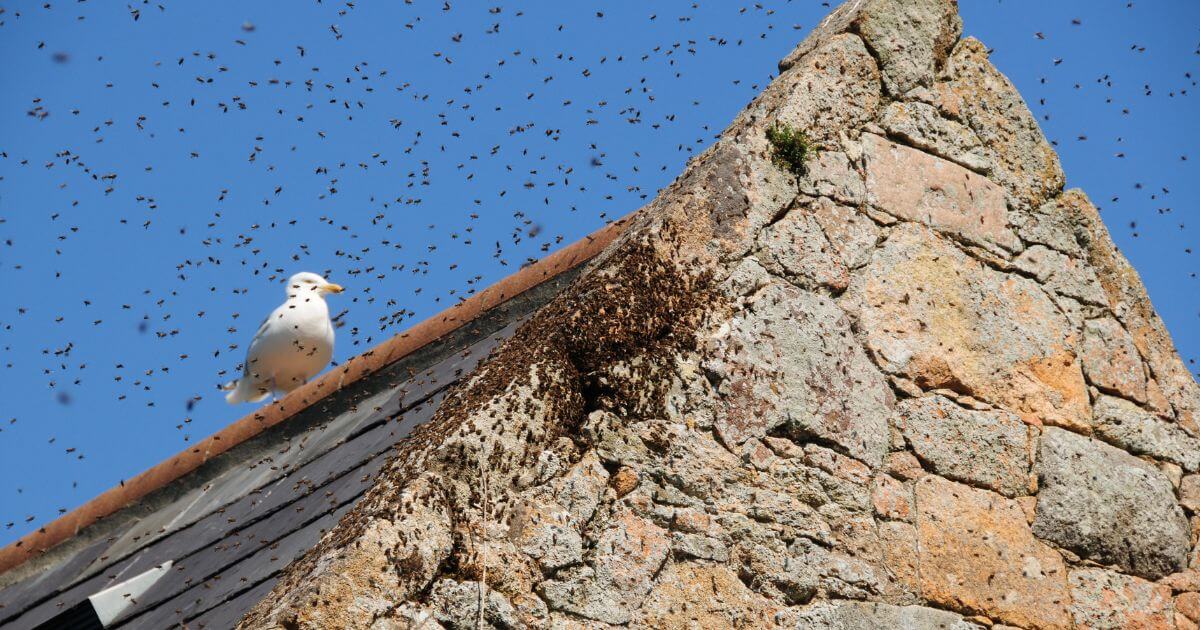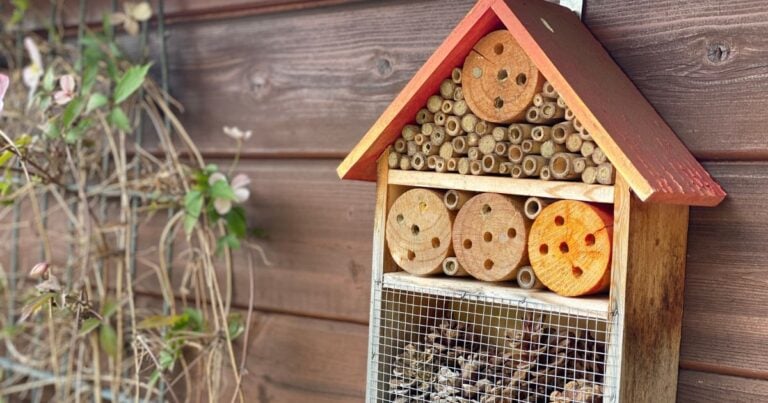What To Do If You Find A Swarm Of Bees
Swarming for bees is necessary for reproduction and the continued success of their colony. Find out what to do if you discover a bee swarm.

Swarming is a natural activity for honey bees and is necessary for the reproduction and continued success of the colony.
Swarming normally occurs during warm spring weather, when the sun is clearly visible. In the suburbs of Melbourne, and throughout Victoria, swarms of European Honey Bees are a frequent occurrence between September and December.
However, smaller secondary ‘afterswarms’ may occur at any time during the warmer months. Swarms have split from their original colony in search of a new nesting site; the ‘primary swarm’ comprises around 60% of the workers, which can equate to nearly 50,000 bees, together with the reigning queen.
Initially, the swarm will settle in a temporary location – often a tree – not far from their previous home. Scouts will then fly out in search of an appropriate site for a new, permanent nest. Often the bees will leave their temporary camp within a matter of hours, and it is rare for them to remain for more than three days. If they do, this may mean that it has become their permanent home by default.
European Honey Bees typically prefer a warm, dry, protected and elevated space for their nests, with a volume of approximately 15-20 litres and a small entrance. In Australia, nest sites usually face north or north-east. Although the normal suburban home is often not secluded enough for the bees, European Honey Bees have a liking for wall cavities and eaves. In Melbourne’s comparatively mild climate, sometimes an exposed position may be chosen for a nest site.
The notion that swarming bees are unusually aggressive is a popular urban myth. In fact, the bees are not generally aggressive at all; they have no brood to defend and are entirely focused on finding a new home since they carry no provisions and are vulnerable to starvation if the weather suddenly turns cold and wet – a regular occurrence in Melbourne’s spring. This does not mean that the bees will not defend themselves vigorously if required – the queen is at the centre of the swarm and is critical for future reproduction. If threatened, bees release a pheromone which alerts the swarm to the potential danger and can result in a large-scale attack.
If you do discover a swarm of bees on or near your property, there are a number of simple precautions you should observe. Avoid the immediate vicinity of the swarm, and do not aggravate or provoke the bees in any way. If you have children or pets, make sure that they are indoors and that you know where they are at all times. If you do venture outside, ensure that you are wearing appropriate footwear. Do not attempt to dislodge or remove the swarm, as this is a dangerous undertaking and may result in serious injury or even death.
Although the swarm is likely to move on of its own accord within a few hours, it’s strongly advisable that you contact an experienced beekeeper or apiarist to assist with removal at the earliest opportunity. It’s a relatively simple matter for an experienced operator to remove and relocate a swarm from a temporary encampment.
However, this can become considerably more challenging once the bees have decided upon a permanent home. Extermination is rarely necessary, and in most cases, the bees can be safely collected and removed with a minimum of harm and disruption.
Spring is a particularly busy time of year for Melbourne’s beekeepers, but the services of an experienced apiarist can normally be procured within 24 hours.
Need help removing a swarm of bees in Melbourne, quickly and safely? Unlike pest control companies, Ben’s Bees will first seek to relocate bees, unless there is no other safe option. Find out more about our bee removal service in Melbourne.



